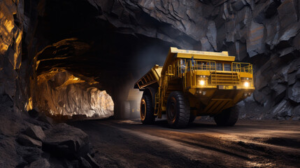California Dog Training makes remarkably fascinating television. However, the methods that are portrayed can often be misleading and may not always be in your dog’s best interest.

To train a dog, you must be willing to work with them and make sure they are happy during training sessions. It is also important to know that you are a big factor in your dog’s behavior.
Positive reinforcement is a training technique that involves rewarding your dog with something they desire for doing what you want. The reward is usually food, but it can also be attention, playtime with you or access to something they love like going for a walk. It is very important that the reward is high value to your dog because this helps increase motivation and retention of the desired behaviour.
The theory behind positive reinforcement is that all living things will repeat behaviors that are rewarded and will stop doing behaviors that are not rewarded. Using physical punishment or coercion to make your dog do what you want them to do is considered negative training and can negatively impact the relationship between you and your dog.
Many trainers that use aversive training methods claim to have a strong relationship with their dogs, however these relationships are often founded on mutual distrust and an imbalance of power between the human and animal. Additionally, the use of aversive methods to teach your dog may be causing them stress, which can lead to a variety of health problems including anxiety and depression.
Using positive reinforcement in training is a more balanced approach that takes into consideration the whole dog and their emotional state as well as their learning skills and needs. It can be a longer process, but is more effective at teaching your dog to behave and creating a healthy relationship between you.
One of the biggest issues with aversive training is that it can lead to an over reliance on treats, which in turn can create an unhealthy relationship between your dog and food. This is why it is so important to train your dog with other rewards such as verbal praise and playtime and only use treats as a reward occasionally.
It is also important to systematically introduce and practice the new behavior in different environments so that it becomes an automatic response. This will help your dog to feel confident in the fact that they can do what is asked of them, which will decrease their frustration and fear when they are in an environment that may not be as familiar to them as their training area.
Negative Punishment
When punishment is used correctly, it can be very effective at changing unwanted behavior. It can be used to stop dogs from jumping up on visitors, for example, or to teach them not to play tug of war with other dogs. However, it is important to understand that punishment must be followed by positive training to help your dog learn what to do instead of the undesirable behavior. This is why it is vital to use an experienced trainer who knows how to train and punish a dog effectively.
In one study, researchers observed dog trainers using various methods to train dogs and found that some used a higher proportion of aversive-based techniques than others. They also found that the more aversive the trainer’s methods were, the more stress the dog displayed during training sessions.
To assess the level of stress, the research team used a cognitive bias task to evaluate the dogs’ emotional states and behavioral responses. This test measures how long it takes for dogs to reach the “positive” location in a series of trials. The “positive” location is a place in the room where food is available, while the “negative” locations are empty bowls. The training trials lasted up to 20 seconds.
During the welfare assessment, the researchers observed that dogs from groups using aversive-based techniques showed more anxiety and fear than those in groups using reward-based methods. During the training sessions, dogs from Group Aversive were more frequently in low behavioral states and panted more often than those in Group Reward. Tense and low body postures are indicators of acute stress in dogs, while panting is a typical response to perceived threat or danger.
Negative punishment is defined as adding something unpleasant to a stimulus that is already present, or taking away something favorable from a stimuli that is already occurring. It can be as simple as removing a treat or putting your hand in front of the dog’s face to interrupt a behavior. A trainer can also use verbal cues to tell the dog that its behavior is unacceptable. These cues include yes, okay, no/bad/wrong and quitting signal.
Positive Training
Positive training refers to a system of teaching that relies on rewarding desirable behaviors and ignoring undesirable ones. It is the method used by reputable trainers and the only one recommended by animal welfare organizations. Positive reinforcement means adding something positive immediately after the behavior, like a treat, which increases the likelihood of it occurring in the future. Positive punishment, on the other hand, decreases the probability of a behavior by adding something your dog does not like. This can be physical, as in a pop with a collar or verbal, as in saying “no.” In the right hands, it is an effective tool to use when teaching your dog proper behaviors.
Despite this, many so-called “positive only” trainers have developed a bad reputation for their ineffective and often dangerous methods. They often fill their clients’ heads with fear and propaganda about the dangers of correction, telling them that correcting their dog will cause fear, stress and even physical injury.
In reality, however, most dogs cannot live in secluded fields or training spaces and they have to re-engage with the world every day. They have to walk on the street, go to the grocery store and meet people. Most of them need a dog who will not jump up on people or other dogs and who will remain calm around strange dogs and humans.
These are exactly the types of behaviors that can be taught using positive training. But too many “positive only” trainers have been filling their clients’ heads with misinformation about the effectiveness of negative training techniques and have been refusing to give them the behavioural advice that they need in order to get results. This is a major problem and the reason why many owners are seeking other trainers with different approaches to dog training who will actually work with them in a way that they can understand and trust. In other words, they need trainers who will help them to teach their dogs to behave correctly in the human-dominated world. In short, they need trainers who will be able to help them to cross over from old-fashioned training methods to the newer, science-based approach that is proven to work.
Negative Training
Dog owners are increasingly turning away from aversive trainers and methods. Clickers, treat bags and positive reinforcement are replacing metal collars, shocks and dominance theory. Even those who still resort to compulsion tools are often finding that the alternatives are kinder to dogs, more humane and less likely to instigate aggressive or fearful behaviour.
Negative training is based on the principle that to reduce the likelihood of a behavior you must take something away from the animal. It is important to note that the negative reinforcer must be very highly valued to be effective. Otherwise it can increase the dog’s overall stress level which is measurable in saliva swabs.
In addition to reducing the frequency of a particular behavior, negative training is also effective in reducing the intensity of the behavior. This is especially useful in cases where the behavior is inappropriate, such as barking or jumping. In these situations, the goal is to teach the dog to calm down and sit by giving them a reward immediately after the desired behavior.
Sadly, this isn’t always enough to overcome some serious aberrant dog behaviours such as excessive excitement. When a dog becomes hyperactive and arouses a crowd, many “positive only” trainers will simply encourage the owner to redirect their dogs excitement through play, affection or treats – rather than teaching them to calm down – because they don’t believe in using force.
These trainers are missing a huge opportunity to help dogs and their owners. They are essentially advising the owners to ignore their behaviour and hope for extinction. This type of behavioural advice is extremely frustrating for the owner and does nothing to address the underlying cause.
The best way to get around this is for all aversive trainers to sign a legal statement that they will not use any form of compulsion to train their clients’ dogs and will accept full lawful responsibility should their dog be aggressive or withdrawn. When I ask for these statements to be signed by ideologue trainers, they tend to disappear like an ostrich – citing all of the usual excuses about how they are lovely people and love dogs, etc.

